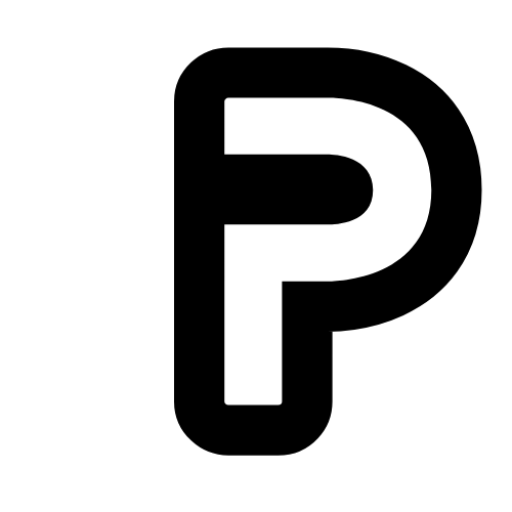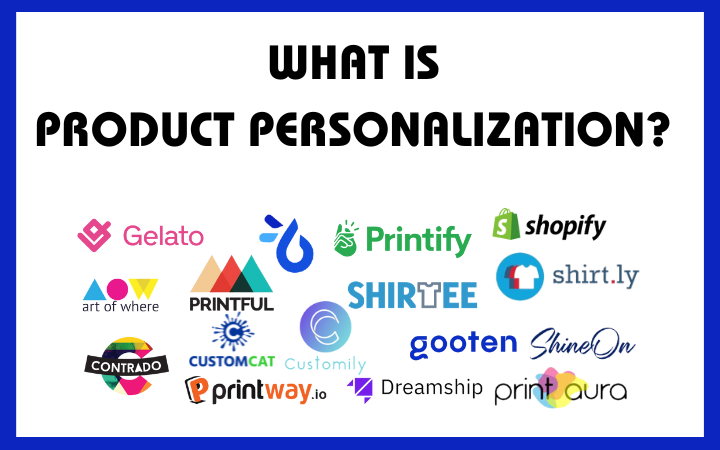Product personalization in the context of print-on-demand refers to the customization of physical goods, such as apparel, accessories, home decor items, and more, based on individual customer preferences.
Print-on-demand (POD) services allow businesses to create and fulfil orders for custom-designed products as they are requested, eliminating the need for large inventories and enabling greater flexibility in offering personalised items.
There are few to many product personalizer apps that can be used to improve your print-on-demand business.
These apps include and not limited to:
Here’s how product personalization works in the print-on-demand industry:
1. Customizable Designs: Print-on-demand platforms typically offer a range of customizable designs that customers can personalise according to their preferences. These designs may include graphics, text, images, and other elements that can be modified by the customer.
2. Personalization Options: Customers can personalise products in various ways, such as adding their names, initials, or custom messages to items like t-shirts, mugs, phone cases, and posters. They may also have the option to choose colours, sizes, and other features to tailor the product to their liking.
3. Design Tools: Many print-on-demand services provide online design tools or interfaces that allow customers to create and customise their products directly on the website. These tools often include features like drag-and-drop functionality, text editing, image uploads, and preview options to help customers visualise their personalised items before ordering.
4. Integration with E-commerce Platforms: Print-on-demand services often integrate with popular e-commerce platforms like Shopify, WooCommerce, and Etsy, enabling businesses to seamlessly offer personalised products through their online stores. This integration streamlines the ordering and fulfilment process, making it easier for businesses to manage personalised orders.
5. On-Demand Printing: Once a customer places an order for a personalised product, the print-on-demand service produces the item on demand, typically using digital printing technologies like direct-to-garment (DTG) printing or dye-sublimation printing. This allows for quick turnaround times and eliminates the need for businesses to hold inventory of pre-printed items.
6. Quality Control: Print-on-demand providers typically maintain strict quality control measures to ensure that personalised products meet high standards of print quality and durability. This includes using high-quality materials, employing skilled printing technicians, and conducting thorough inspections of finished products before shipping them to customers.
Benefits of using product personaliztion app:
Product personalization in print-on-demand offers numerous benefits for both businesses and customers:
- Enhanced Customer Engagement: Personalization fosters a deeper connection between customers and products, as they have the opportunity to create items that resonate with their unique preferences and interests. This heightened engagement can lead to increased customer satisfaction and loyalty.
- Increased Sales and Conversions: Customized products have a higher perceived value, often resulting in higher conversion rates and increased sales. When customers can personalize products to suit their needs, they are more likely to make a purchase.
- Differentiation and Competitive Advantage: In a crowded marketplace, offering personalized products sets a business apart from competitors. It allows for differentiation and gives customers a reason to choose one brand over another.
- Reduced Inventory Costs: Print-on-demand eliminates the need for businesses to carry large inventories of pre-printed items. Instead, products are produced on-demand as orders are received, reducing the risk of overstocking and minimizing storage costs.
- Flexibility and Adaptability: Personalization allows businesses to quickly adapt to changing trends and customer preferences. They can easily introduce new designs and products without the need for extensive upfront investment or inventory management.
- Market Insights and Data Collection: By tracking customer preferences and purchasing behavior, businesses can gain valuable insights into market trends and consumer preferences. This data can inform future product development and marketing strategies.
- Brand Loyalty and Advocacy: When customers receive personalized products that exceed their expectations, they are more likely to become loyal advocates for the brand. Positive experiences with personalized products can lead to word-of-mouth referrals and repeat business.
- Higher Perceived Value: Personalized products often command higher prices than standard, non-customized items. Customers are willing to pay a premium for products that are uniquely tailored to their preferences, leading to increased revenue and profitability.
Conclusion:
Overall, product personalization in print-on-demand offers a win-win scenario for businesses and customers alike, driving engagement, sales, and brand loyalty in an increasingly competitive market.
It also offers businesses a powerful way to differentiate their offerings, engage customers, and increase sales by providing unique and customised products that cater to individual tastes and preferences.
Disclaimer: Some of the links on this website contains affiliate links, meaning, at no additional cost to you, we may earn a commission if you click through and make a purchase.”
Do you have any questions? Do not hesitate to use our forum.
For more informational resources, subscribe to our newsletter using the form below.


2 thoughts on “What is product personalization?”